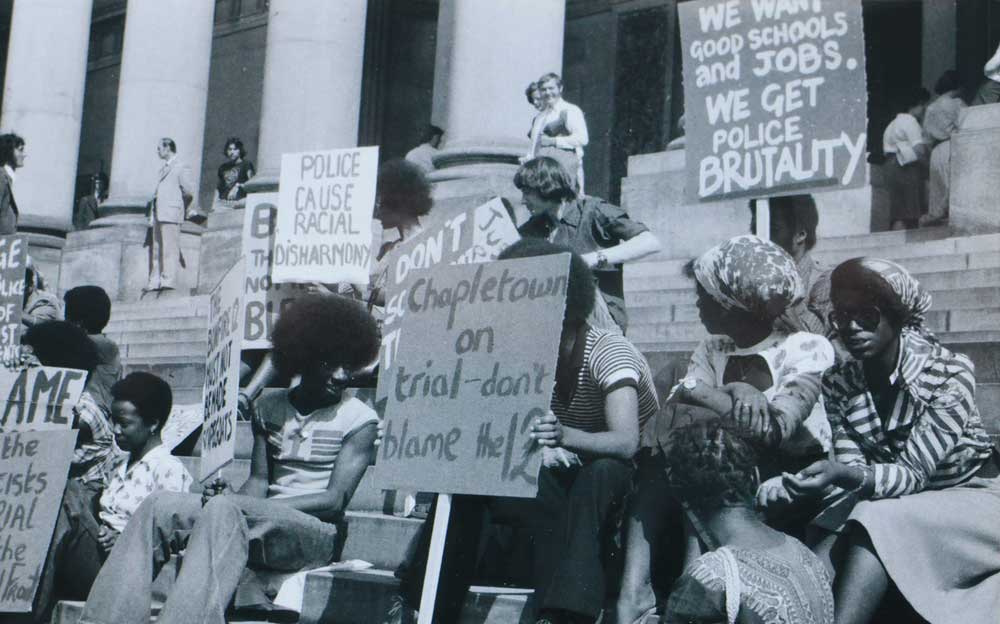Is Violence the Answer?
Using violence as a response to racism can both divide and unite communities. This was demonstrated when a riot erupted in the Leeds suburb of Chapeltown on Bonfire Night 1975.

‘We do not advocate unprovoked violence but if we are attacked then we are left with no alternative but to defend ourselves’, the community newspaper Chapeltown News argued in October 1977, nearly two years after Black young people clashed with police on Bonfire Night 1975. Chapeltown is a multicultural working-class suburb of Leeds that many Caribbean migrants relocated to throughout the postwar period. Black people in Chapeltown had different opinions of the violence of that night and, two years later, continued to dispute whether it was justified.
